|
Me Sahyadri |
|
November 2017 |
|
Volume 4, number11, # 53 |
|
|
Please use minimum 1280 pixel horizontal screen resolution for viewing. Please be patient while all the images in webpage are loaded. Please do not use the images for any commercial use without permission. Text in Marathi and English is not exact translation. Please give sufficient time to allow the photographs to load. Special thanks to all those who helped me during the compilation and for the help and guidance during the activity. |
|
|
|
|
देशाची आर्थिक प्रगती व्हावी असे सर्व नागरिकांना वाटणे सहाजिक आहे. अर्थकारणामुळे मिळणारा रोजगार, समृद्धी यासाठी सर्वांनाच आर्थिक प्रगती हवी हवीशी वाटते. आर्थिक प्रगती होताना, त्याचा दिर्घकाळात समाजावर, निसर्गावर, वातावरणावर दुष्परिणाम होणार नाही याची काळजी घेणे महत्वाचे आहे. मनुष्याच्या भावी पिढ्यांना पाणी, शुद्ध हवा, योग्य वातावरण मिळत रहावे अशी भावना मनात रुजणे महत्वाचे आहे. वाढत्या आर्थिक प्रगतीमुळे नैसर्गिक संपदेवर ताण येतो. प्रगतीसाठी प्रदुषण होते. जंगले, माळराने, व इतर अधिवास नष्ट होतात. वसुंधरेवर रहाणाऱ्या इतर जीवांचा मात्र मनुष्य फारसा विचार करत नाही. आर्थिक प्रगती करताना, मनुष्य निसर्गाची हानी करत आहे. मुळताच माणसाला निसर्गाचे महत्व समजणे हे सध्याच्या आपल्या प्रगत जीवनशैली मुळे अवघड झाले आहे. आर्थिक प्रगती, समाजाची प्रगती व निसर्ग संपदेची निगा, यांचा समतोल राखणे काळाची गरज आहे.
सह्याद्री (पश्चिम घाट) हा एक नैसर्गिक संपदेचा, वैविध्यतेचा, भौगोलिक व ऐतिहासिक ठेवा आहे. वाढत्या मानवी अतिक्रमणाचा, सह्याद्रीच्या विविध घटकांवर होणारा दुष्परिणाम भविष्यात आपल्यालाच धोका निर्माण करेल, यात शंका नाही. शुद्ध पाणी, हवा व उर्जा, भावी पिढीला मिळण्यासाठी, नंद्यांचे उगम असलेला सह्याद्री व त्याभागातील जंगले टिकवणे महत्वाचे आहे. सह्याद्रीच्या महत्वाच्या घटकांचे महत्व छायाचित्रांद्वारे प्रकट करण्याचा मी येथे प्रयत्न केला आहे. येथील पक्षी, प्राणी, वनस्पती, अधिवास, किल्ले व लेणी अशा विविध विषयांबद्दल आपण समजुन घेऊ.
|
|
As the economic development has taken the center stage, the balance between the environmental sustenance and socio economic development will be under the scanner. As most experts with balanced views have proclaimed, Indian wildlife and ecological system sustenance will be under threat, unless precautions are taken with the help of appropriate research and long term national interests. As we encounter the economic development, many habitats which indirectly or directly help sustainable development will be damaged. The awareness to gauge the success by sustainable development and not by year to year growth is a distant dream any environmentalist will assume in current scenario.
Western ghats, or Sahyadri as we all call it as, is a treasure trove of spectacular landscapes, biodiversity, flora, fauna, some amazing geological wonders and man made monuments. With the increasing pressure from human encroachment, all these elements are under stress and in turn are under depletion. Western ghats should be left untouched by human beings, to protect their future generations from getting short of resources, such as water, energy and clean air. The important elements of western ghats, which need protection are highlighted in the new version of Photo journal, Me Sahyadri Magazine. The current issue has some photographs and information about the grassland hills of north western ghats in the rain shadow region east of Pune.
|
|
|
| |
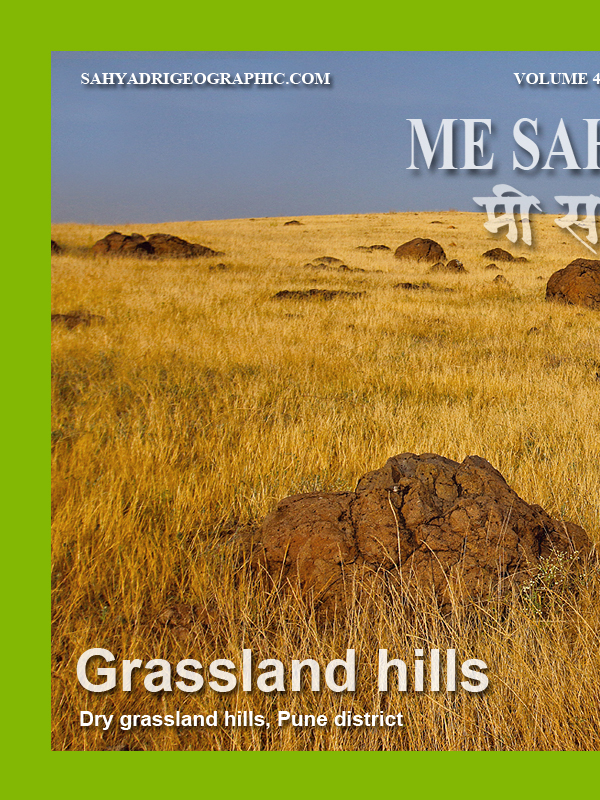 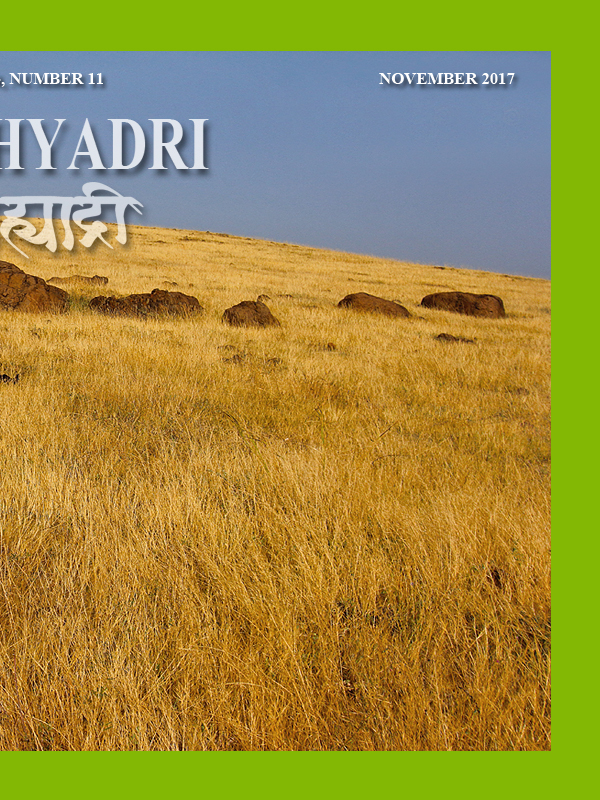
|
| |
| Me Sahyadri – November 2017
|
| |
|
|
सुर्याची तिरपी किरण जेंव्हा गवताळ माळरानावर पडतात तेंव्हा सोनेरी जरीला सुद्धा लाजवेल अशी त्याची झळाळी असते. ओसाड दिसणाऱ्या माळरानावर लहान मोठया पाखरांची चहलपहल सुरु होते. थंडी पडल्यावर उत्तरेकडच्या शुष्क प्रदेशांतुन आलेल्या पाहुण्यांचे थवे माळावर अचानक उंचावतात. आकाश विविध जातींच्या चंडोल पक्ष्यांच्या उंच भराऱ्यांनी जीवंत होते. मुरारी पक्षी मंजुळ शीळ वाजवु लागतात. कुठुन तरी उडत उडत आलेल्या भाट तित्तरांच्या जोड़्या गवतावर उतरतात. गवताचे बी टिपत टिपत गवतात चालता चालता त्या गवतात हरवुन जातात.
दुपारी माळावर खेळ करणारे डोंबारी पक्षी माळावर विखुरलेल्या दगडांवर उन्ह खात बसलेले दिसतात. कोरफडीच्या शेंड़्यांवर गप्पीदास आपली शान दाखवत बसलेले दिसतात. हिरवे लहान राघू भुंगे, चतुर यांना पकडण्यासाठी हवेत करामत करतात. कोतवाल आपल्या इलाख्याची निगराणी करतात. उत्तरेकडुन आलेले विविध जातींचे बंटिंग बाजरीच्या कणसांवर आपला हिस्सा खाण्यात मग्न असतात. लावा पक्षी शेतांच्या बांधावरच्या गवतात दडत दडत अचानक रस्ता ओलांडताना दिसतात. हवा तापण्याची वाट पहात लहान टेकड़्यांच्या टोकांवर कझाकी स्टेप गरुड शांत बसलेले आढळतात. बाभळीच्या झाडावरुन होले माळावरच्या वाटेवर अलगद उतरले. सातबाया जाग्या झाल्या. बिळातुन बाहेर पडलेल्या घोरपडीकडे पाहुन सातबायांचा कलकलाट चालु झाला.
चिंकारा हरणे लहान कळपात सावध सावध डोंगराच्या बाजु बाजुने चरताना दिसतात. कापशी घार हवेत एकाच ठिकाणी फडफड करत शिकारीची तयारी करताना दिसते. ससाणे माळावरच्या मीटर भर उंच आकाशातुन आपले सावज शोधत तरंगतात. रात्र भर शिकार शोधुन शोधुन दमलेले तरस, कोल्हे, लांडगे आपल्या आपल्या जमिनीखालच्या अड़्यांमध्ये निजलेले असतात. अचानक गवतात लगभग होते. १०-१२ धावक पक्षी गवतात दुडदुडत किडे शोधु लागतात. बांधावरुन पिवळ्या गालाच्या माळ टिटव्या निरिक्षण करु लागतात. एव्हाना ससे शोधत शोधत कझाकी स्टेप गरुड आकाशात रिंगण घालु लागतात.
इकडे धनगराच्या वाघुरातुन धुराच्या वेलांट्या बाहेर पडु लागल्या. पुढचे पाय बांधलेले चार भीमथडी घोडे गवतावर चरत चरत येतात. बाभळीच्या काटेरी वाघुरातून धनगराच्या शेळ्या मेंढ्याचा कळप बाहेर पडतो. त्यांच्या मागे मागे दोन रंगीत पागोटी, एक गडद लाल आणी एक गडद गुलाबी संगतीने बाहेर पडतात. पागोटयांच्या खाली जाड मिश्या असतात. संगतीला घोंगडी, लांब निमुळते शेकाटे असा लवाजमा माळापल्याडच्या डगरीवरुन पुढे दिसेनासा होतो. सोनेरी माळावरची थंड हवा एव्हाना तापु लागते. माळरानांवर आता कुंपणे आली आहेत. वाट अडल्याने चिंकारे चिंतेत दिसतात. गवतावरचे चार मीटर उंच आकाश आपली दुनिया समजणारे ससाणे कुठे तरंगणार हा अजुन एक प्रश्न आहे.
माळावर शासनाने पुण्यासाठी नवे विमानतळ होऊ घातले आहे. सर्व्हे चालु आहेत. गावकऱ्यांनी आपल्या जमिनींचे तुकडे पाडुन विकण्यास सुरुवात केली आहे. सर्वत्र कुंपणांचा पसारा वाढत आहे. चिंकारा हरणांना कुंपण, गावातली कुत्री आणी लहान होत चाललेल्या अधिवासाचा सामना करणे भाग पडत आहे.
हळू हळू सूर्य डगर सोडून बराच वर आला. माळरानावर रखरख वाढू लागली. पाखरांचा कलकलाट कमी झाला.
|
|
As the sun rises above the barren rocky hills after the cold starry night, the golden light spreads over the yellow grassland. The grass glitters with golden sparkle. The sun brings little warmth in early morning cold breeze. The birds on the dry grassland leave their roosting places in the acacia trees and the bushes. The migratory birds from the north and resident birds make a gala on the grassland in the winter. The migratory larks start making synchronised acrobatic movements in the flocks in the sky, sometimes showing their grey upperwings and sometimes their white underbodies.
The resident rufous tailed larks make beautiful light whistles adding the light melody to the wind melody. The pairs of chestnut bellied sandgrouse land from the sky and start walking fast picking the seeds from the soil under the grass. They soon are lost in the barren landscape thanks to their amazing plumage camouflaged with respect to the habitat. The acrobate lark species, the ashy crowned sparrow larks are seen basking in the morning sun on the rocks.
The bush chats are seen on the thorny aloe vera tips while the green bee eaters are busy catching the damselflies and bees in the mid air with intermittent perching on their favourite fence wires and acacia branches. As usual the drongos are doing their job of policing. The bajra and maize fields are invaded by the huge flocks of the migratory buntings. The frankolins are making their morning titir titir calls, while walking briskly over the mounds. The rock bush quails are busy in the foliage and the bushes and are hardly seen due to their amazing camouflage. The steppy eagles are patiently seating on the hill tops waiting for the air to get warmed up so that they can take their flights.
The Chinkara gazzels are seen cautiously feeding on the grass on the hills away from the human habitation. The devil eyed, black shouldered kites are seen hovering above the grassland looking for their food. The harriers are seen floating in the sky just few meters above the grassland, constantly looking for their food, with their heads down. While the nocturnal animals like wolfs and hyenas are now resting in their dens, suddenly one can see heard of grazing sheeps followed by their nomadic human masters. The colourful turbans, large moustaches and long bamboo stick follow these large sheep heards only to disappear beyond the horizon. After landing the courser birds are seen running on the grass before they start picking the beetles in the grass. By the time sun heats up the air, one can see the steppe eagles high up in the sky making rounds and rounds.
While this is happening the humans are busy fencing the land plots, preparing for the economic boom they see in the future of this dry grassland thanks to the proposed new Air port.
|
|
|
| |
  |
| The banner has been published here to improve the awareness of the trekkers and tourists visiting the various mountain forts, mountains in north western ghats. Please avoid accidents, by following good outdoor ethics such as no swimming in cisterns at mountain forts, no rock climbing without proper technical equipment and expertise. Please do not adventure, trek with any group or individually without understanding the risks associated. The frequency of the solo trekker fatalities have increased recently. Please strictly avoid solo treks. Please also avoid treks to mountains in large commercial groups, as it leads to damage to biodiversity of these high elevation ecological islands. Please respect the wildlife and biodiversity of the region. This has become more important as the ever increasing human interference is leading to severe damage to fragile ecosystems. Please be aware of the wildlife and biodiversity of the mountains before visiting these mountains. Please follow outdoor ethics. Follow ASI and Forest department rules. The concept of use of symbols for outdoor ethics was conceived and designed by "Sahyadri Trekker Bloggers Group". |
| |
|
|
| |
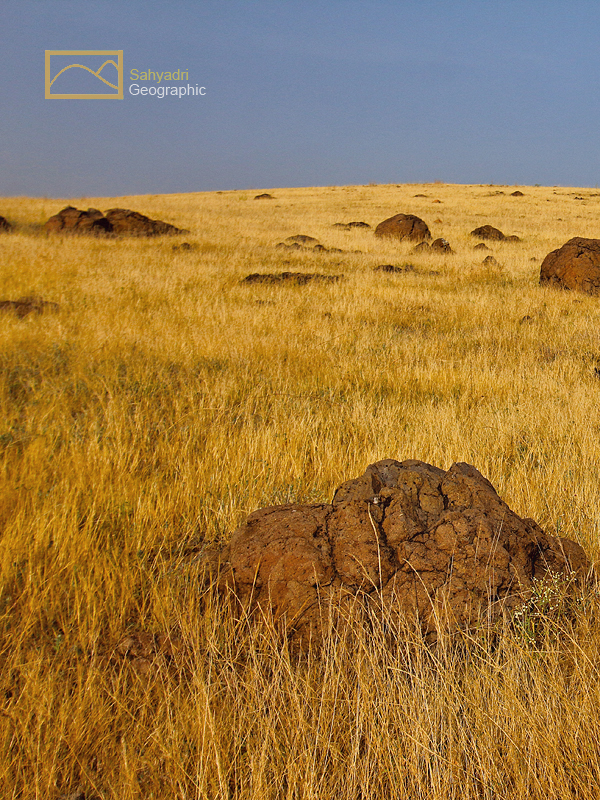 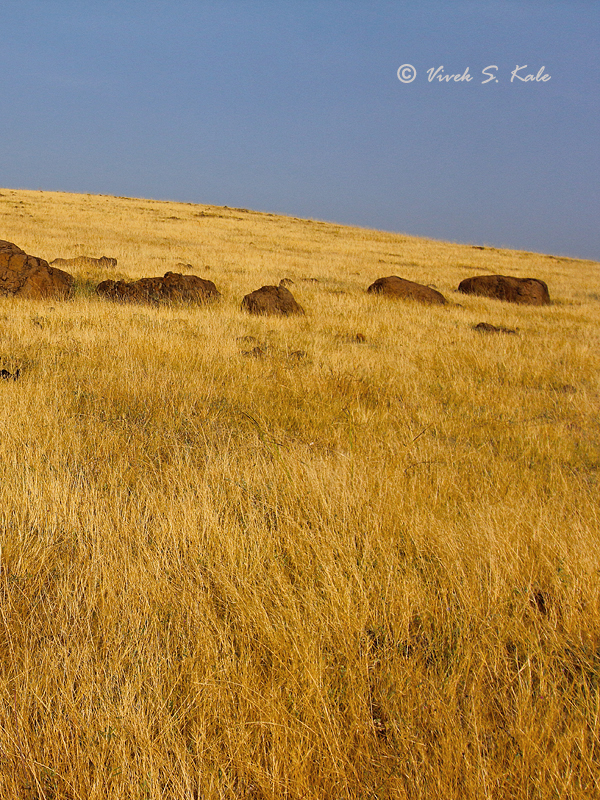 |
| |
| Dry grassland, Pune district, Maharashtra, India |
| |
|
|
| |
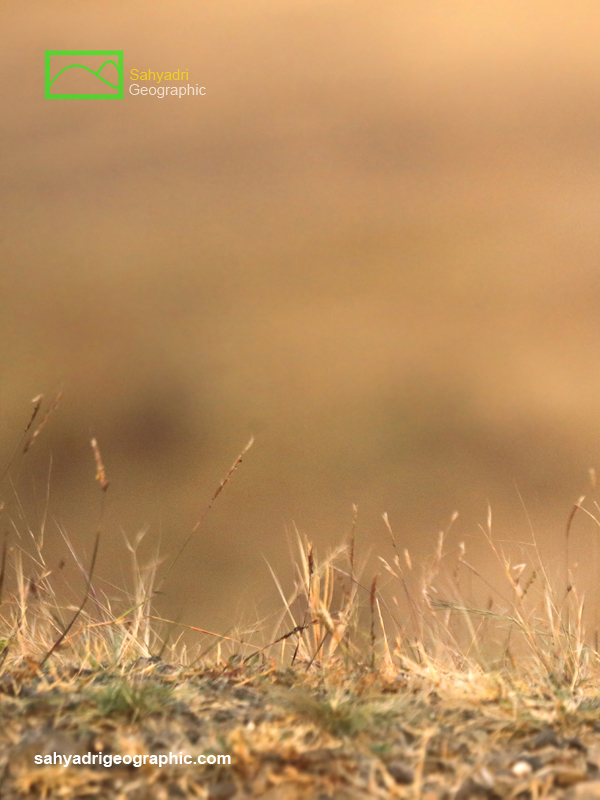 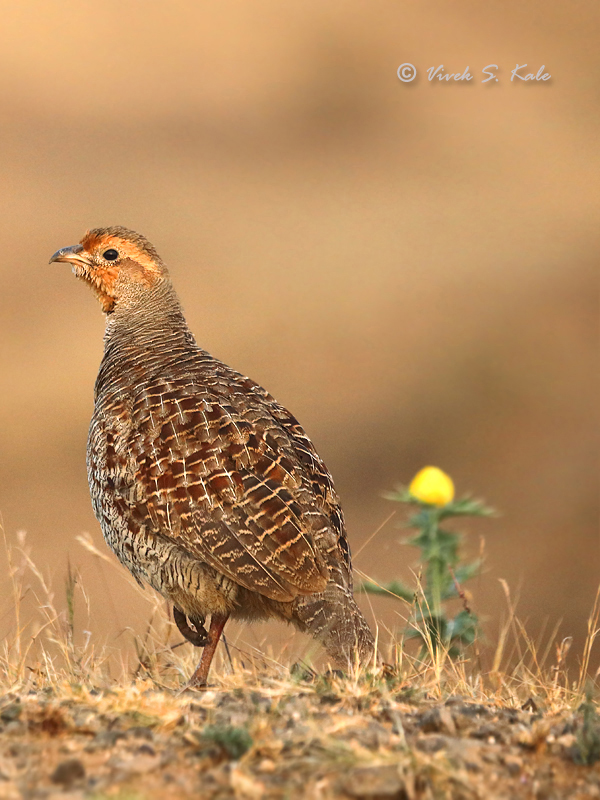 |
| |
| 1. Grey Frankolin, Francolinus pondicerianus pondicerianus, Dry grasslands, Pune district, Maharashtra, India |
| |
|
|
चित्तुर नावाने ओळखल्या जाणारा ग्रे फ्रॅन्कोलिन पक्षी, महाराष्ट्रात शुष्क प्रदेशात सर्वत्र आढळतो. फ्रॅन्कोलिन जातीचे पाच पक्षी जगात आढळतात. ब्लॅक फ्रॅन्कोलिन, पेन्टेड फ्रॅन्कोलिन, चायनीज फ्रॅन्कोलिन, ग्रे फ्रॅन्कोलिन आणि स्वॅम्प फ्रॅन्कोलिन या सर्व पाच जातींचे पक्षी भारतात आढळतात.
करडा चित्तुर (ग्रे फ्रॅन्कोलिन) कोरड़्या ओसाड पठारी भागात समुद्रसपाटीपासुन अंदाजे ५०० मीटर उंचीपर्यंत आढळतो.
करडा चित्तुर अंदाजे ६० से मी लांब असतो.
या पक्ष्याच्या ३ उपजाती आहेत. यातील मेक्रेन्सिस उपजात वायव्य भारत, दक्षिण पाकिस्तान,
बलुचिस्तान, इराण भागात आढळते.
इंटर्पोसिटस जात उत्तर भारतात आढळते. तपकिरी छटा असलेली पोन्डीसेरियनस उपजात दक्षिण भारतात आढळते.
या पक्ष्याच्या अंगावर तपकिरी पट्टे असतात तर गळ्याकडे तपकिरी रंग असतो. त्याची भुवई गदड असते. नर पक्ष्याला पायावर स्पर असतात तर मादीला असे स्पर नसतात.
सकाळी नर पक्षी कटितर कटितर असा सलग आवाज करताना ऐकु येतो. मादी पक्षी त्याला प्रतिसाद देत पिला, पिला, पिला असा सलग आवाज करताना ऐकु येते.
करडा चित्तुर एप्रिल ते सप्टेंबर काळात जमिनीवर घरटे तयार करतात. गवताळ व ओसाड जमिनीवर ते गवताच्या बिया, धान्य, वाळवी, शेणातले किडे खातात. भराभर पळणाऱ्या या पक्ष्यांना फार उंच उडता येत नाही. ते जमिनीपासुन थोड़्या उंचीवरुन थोड़्या अंतरापर्यंत उडतात.
या पक्ष्यांची शिकार त्यांच्या मांसासाठी केली जाते. आय.यु.सि.एन.संस्थेच्या वर्गिकरणानुसार करडा चित्तुर "लिस्ट कन्सर्न्ड" मानला जातो.
|
|
Frankolins are the birds from Francolinus genus of the partridge subfamily of the pheasant family. Grey Frankolin is about 60 cm in size. There are five species of Frankolins, in the world and all these five species can be seen in India.
These species consist of Black francolin (Francolinus francolinus), Painted francolin (Francolinus pictus), Chinese francolin (Francolinus pintadeanus), Grey francolin (Francolinus pondicerianus), and Swamp francolin (Francolinus gularis).
The grey francolin is found foraging on bare or low grass covered ground in scrub and dry open country up to 500 meter altitude above mean sea level.
There are three subspecies of the greay frankolin. Palest of three subspecies, Francolinus pondicerianus interpositus is found in the North West India, Francolinus pondicerianus mecranensis and is found in South Pakistan, Baluchistan and Iran. Francolinus pondicerianus pondicerianus is found in South India. The Francolinus pondicerianus pondicerianus species seen in south India (shown in the photographs here) is barred throughout with the pale face and darker rufous throat. The plumage is rich brown and superciluin is darker as compared to other two subspecies. The male can have up to two spurs on the legs while females do not have spurs on the legs.
They make calls in the morning. These calls can be heard particular ly in mornings.. The birds nest on the ground in April to September period. These birds walk fast gracefully and are weak in flight and fly at about 2-4 meter height. They feed on seeds, grains, termites, beetles and other insects.
The bird is commonly hunted for its meat and is used as pet for fighting sport, particularly in north India. As per IUCN red list classification, it is a “least concern” species.
|
|
|
| |
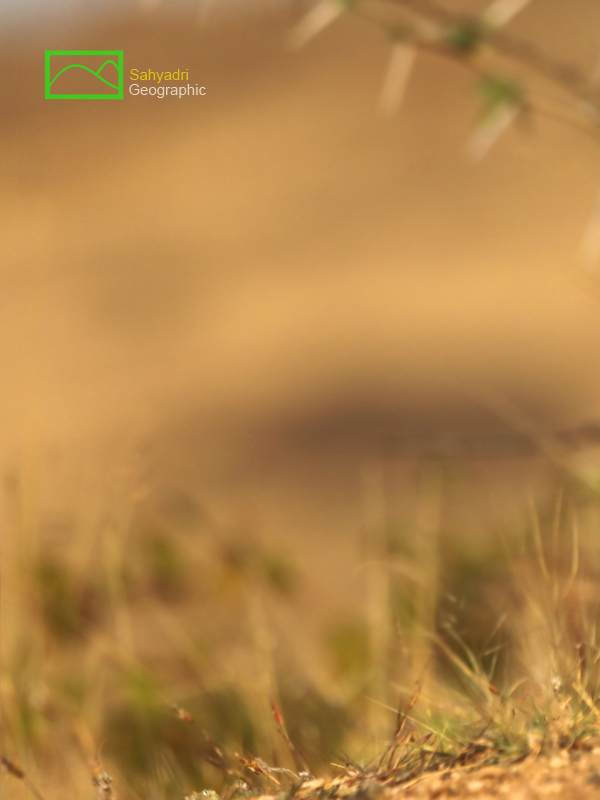 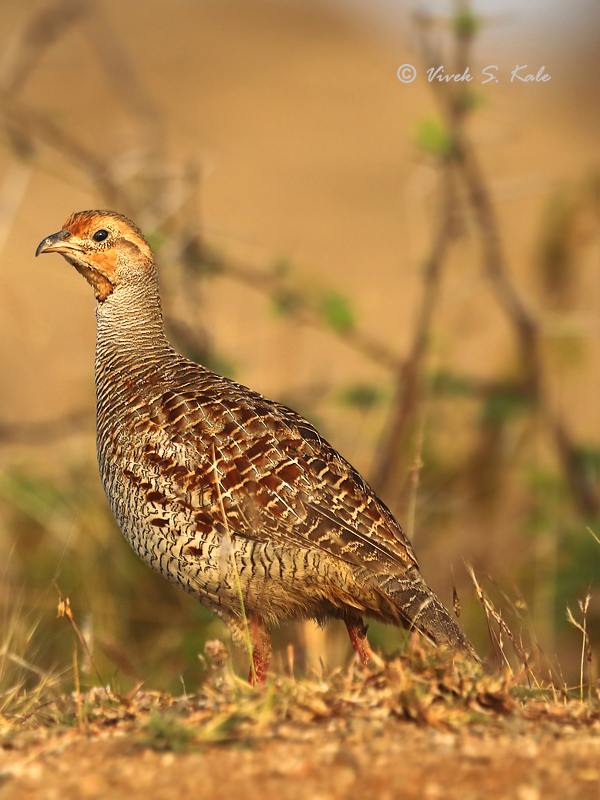 |
| |
| 2. Grey Frankolin , Francolinus pondicerianus pondicerianus, Dry grasslands, Pune district, Maharashtra, India |
| |
|
|
| |
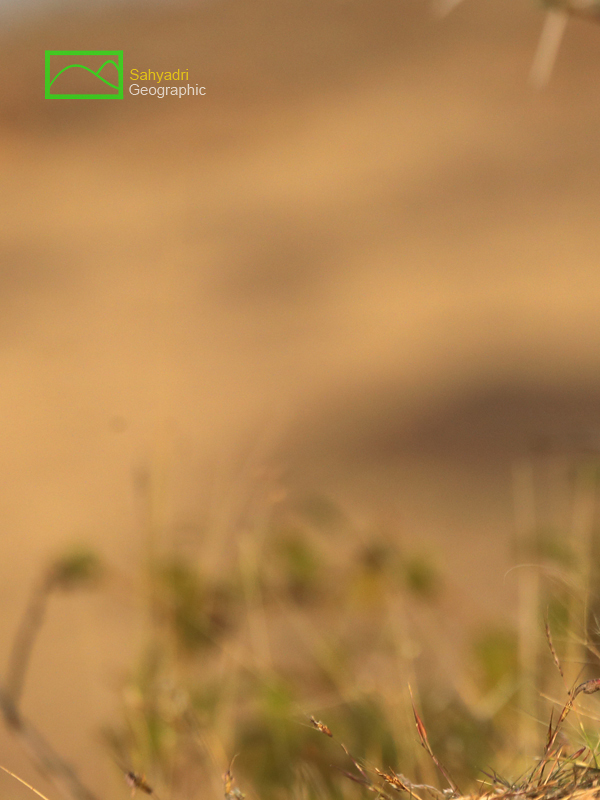 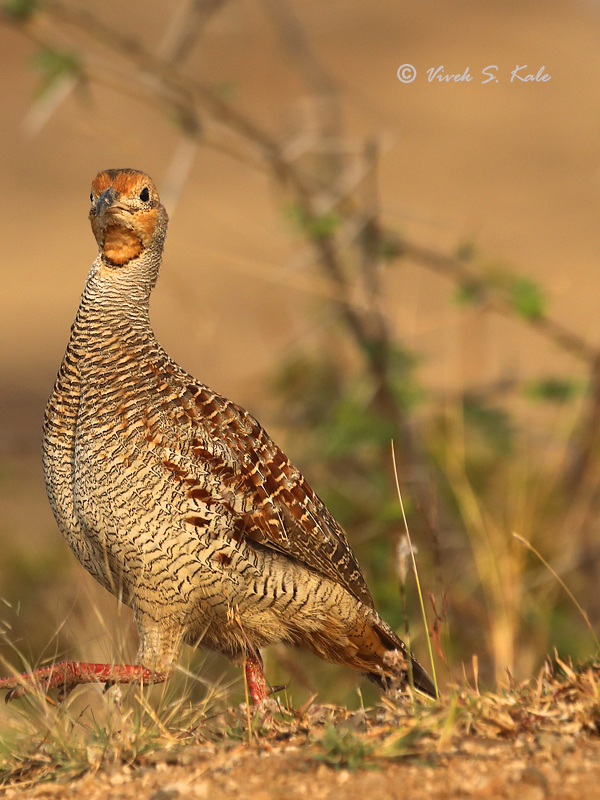 |
| |
| 3. Grey Frankolin , Francolinus pondicerianus pondicerianus, Dry grasslands, Pune district, Maharashtra, India |
| |
|
|
| |
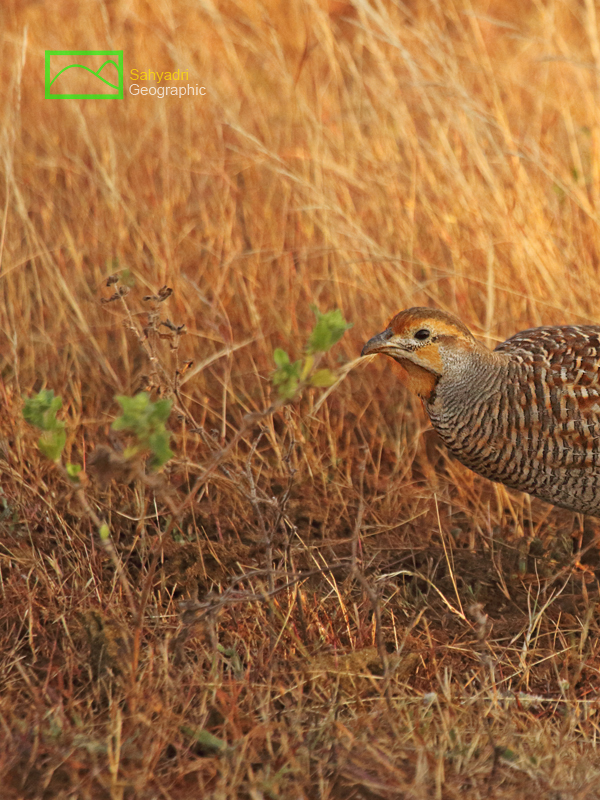 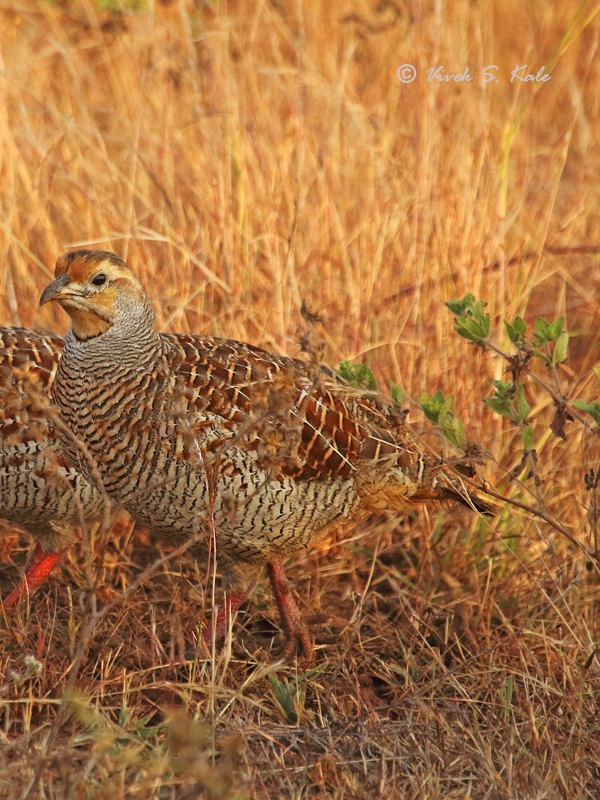 |
| |
| 4. Grey Frankolin , Francolinus pondicerianus pondicerianus, Dry grasslands, Pune district, Maharashtra, India |
| |
|
|
| |
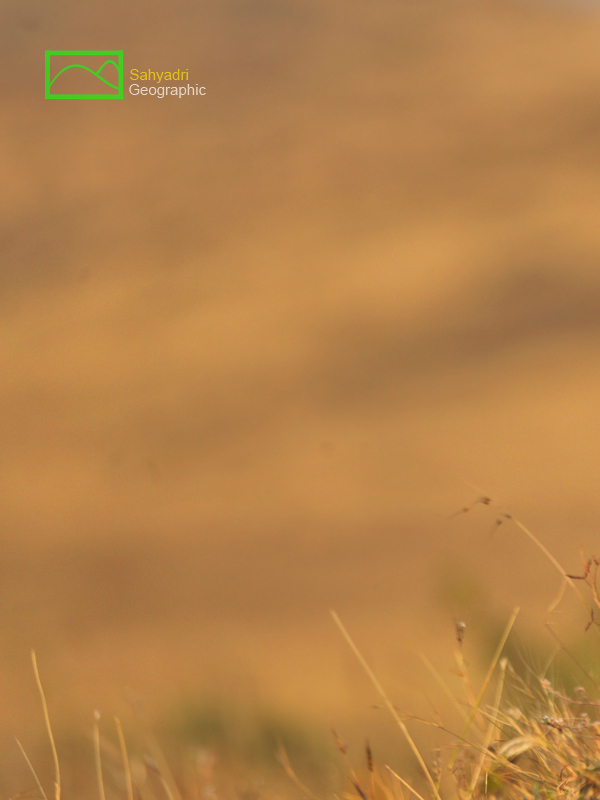 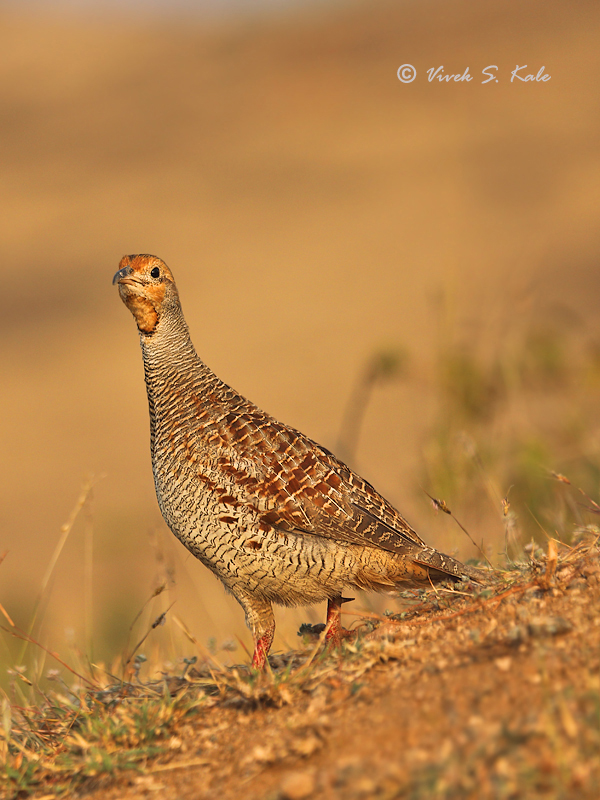 |
| |
| 5. Grey Frankolin , Francolinus pondicerianus pondicerianus, Dry grasslands, Pune district, Maharashtra, India |
| |
|
|
| |
 |
| |
| 6. Grey Frankolin , Francolinus pondicerianus pondicerianus, Dry grasslands, Pune district, Maharashtra, India |
| |
|
|
| |
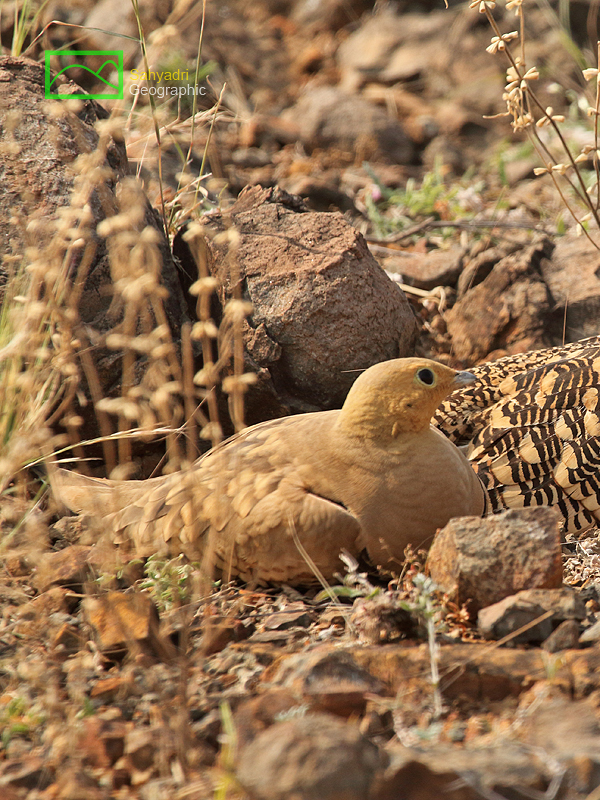 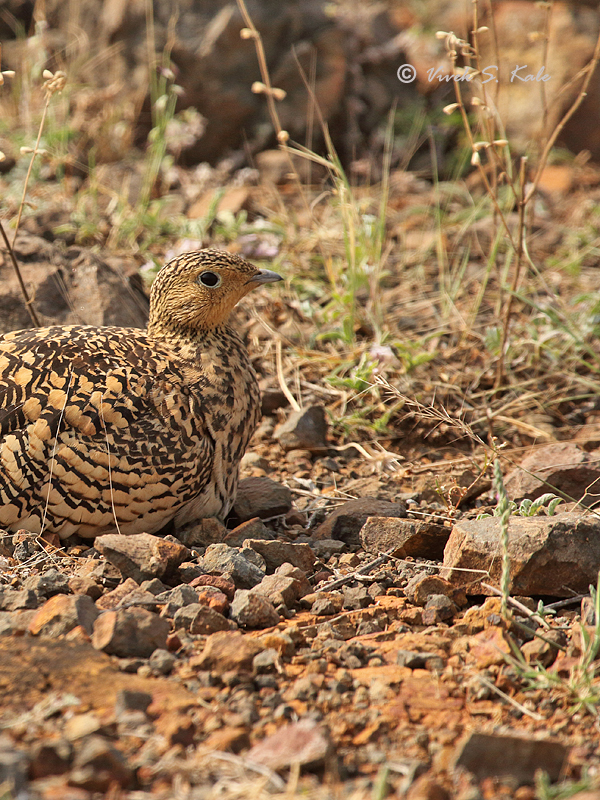 |
| |
| 7. Chestnut bellied Sandgrouse , pterocles exustus , Dry grasslands, Pune district, Maharashtra, India |
| |
|
|
पोकुर्डी कबुतराच्या आकाराचा एक सुंदर पक्षी आहे. ओसाड व खडकाळ माळरान आणी शुष्क प्रदेश हा या पक्ष्याचा अधिवास आहे. बसक्या अंगाचा आणी लहान पायाचा हा पक्षी जमिनीलगत चालताना दिसतो. तो गवताचे बी खातो. या पक्ष्याचा रंग आजुबाजुच्या अधिवासाशी मिळता जुळता असतो. त्यामुळे तो अधिवासात मिसळुन जातो. शिकारी पक्ष्यांपासुन त्याचे यामुळे संरक्षण होते. पिवळसर तपकिरी रंगाच्या या पक्ष्याच्य अंगावर तपकिरि छटांची अजब रंगसंगती असते. मादीच्या अंगावर काळे ठिपके, पट्टे असतात. उंच मानेचा हा पक्षी. बहुतेक माळरानावरील पक्ष्यांसारखा हा पक्षी जमिनीवर घरटे करतो.
|
|
The chestnut bellied sandgrouse (pterocles exustus) is pigeon sized bird seen in dry grassland, scrublands throughout India except north east India. The birds shuffle along the ground on its short legs. It is highly camouflaged bird. It is extremely difficult to spot the bird in dry grassland due to its amazing camouflage. This helps the bird in its protection from the predators. It is a ground bird. It is yellowish sandy brown cloured bird with pin tail. It has narrow black band across breast. It has brownsigh black belly. Female is streaked spotted and barred in black all over its body except its chin. It has black band across its breast. These birds feed on grass seeds. Like many other grassland birds it nests on ground.
|
|
|
| |
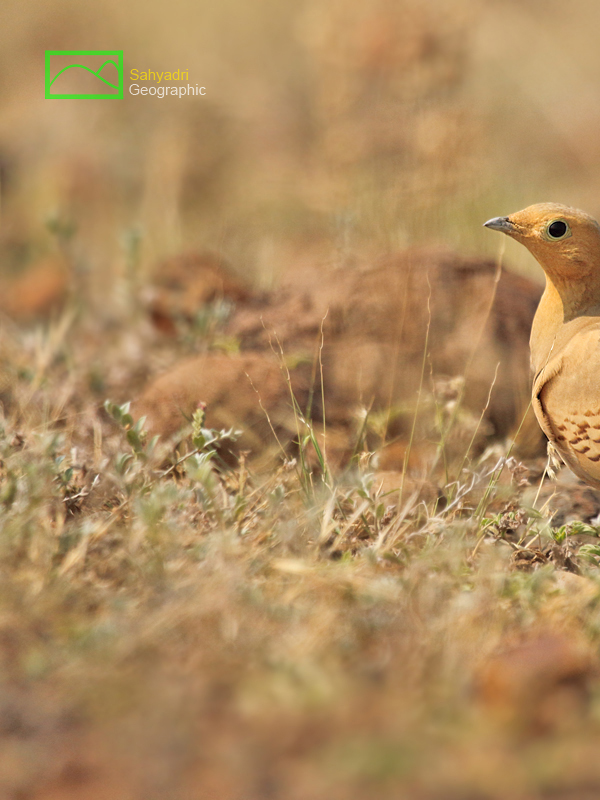  |
| |
| 8. Chestnut bellied Sandgrouse , pterocles exustus, Dry grasslands, Pune district, Maharashtra, India |
| |
|
|
| |
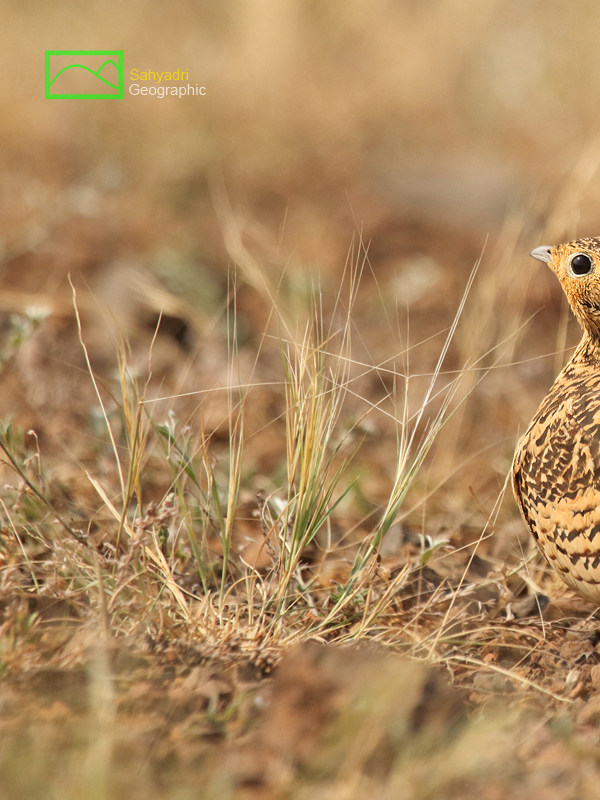 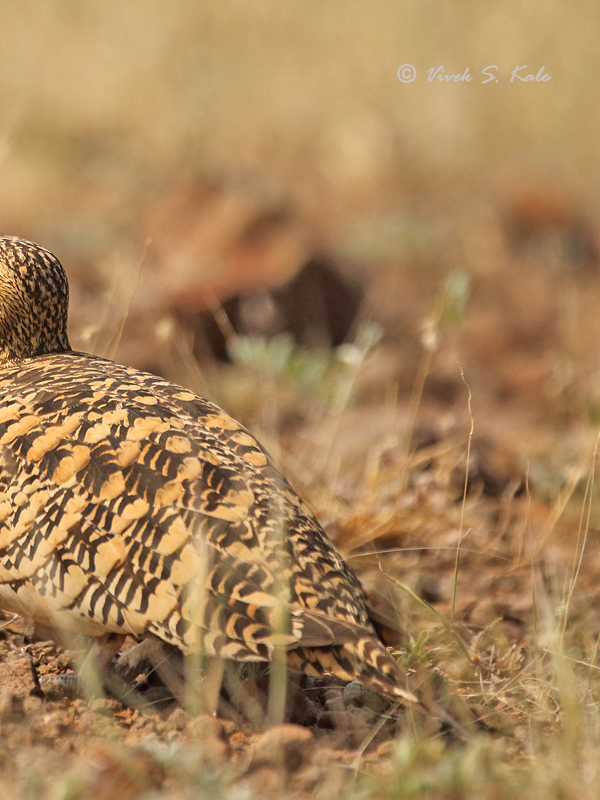 |
| |
| 9. Chestnut bellied Sandgrouse , pterocles exustus , Dry grasslands, Pune district, Maharashtra, India |
| |
|
|
| |
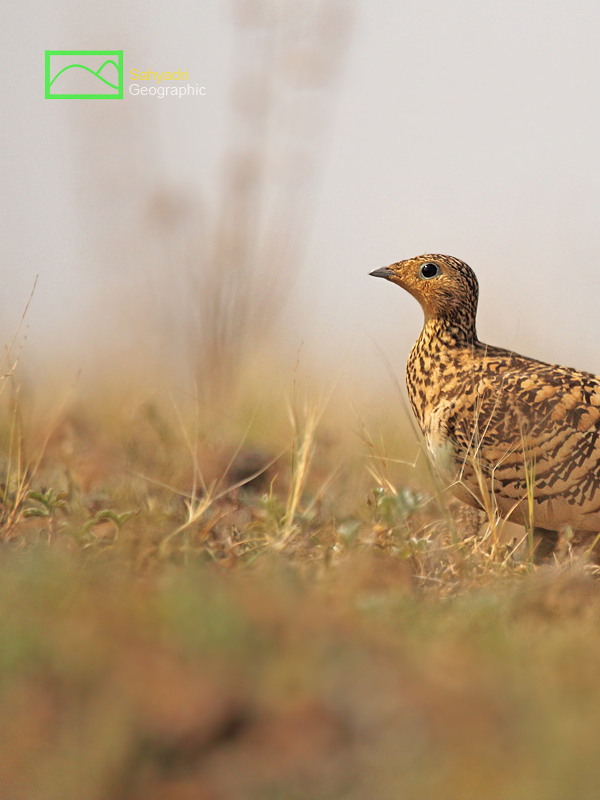 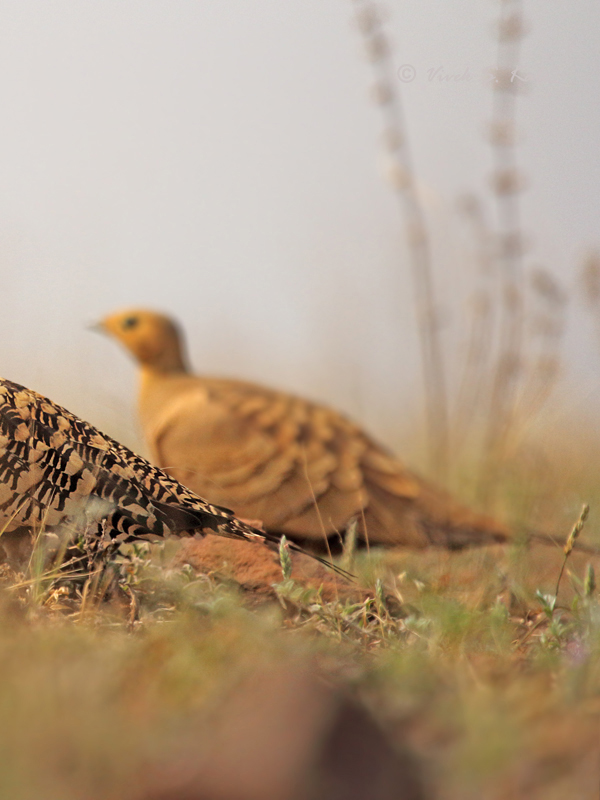 |
| |
| 10. Chestnut bellied Sandgrouse , pterocles exustus, Dry grasslands, Pune district, Maharashtra, India |
| |
|
|
| |
  |
| |
| 11. Chestnut bellied Sandgrouse, pterocles exustus , Dry grasslands, Pune district, Maharashtra, India |
| |
|
|
| |
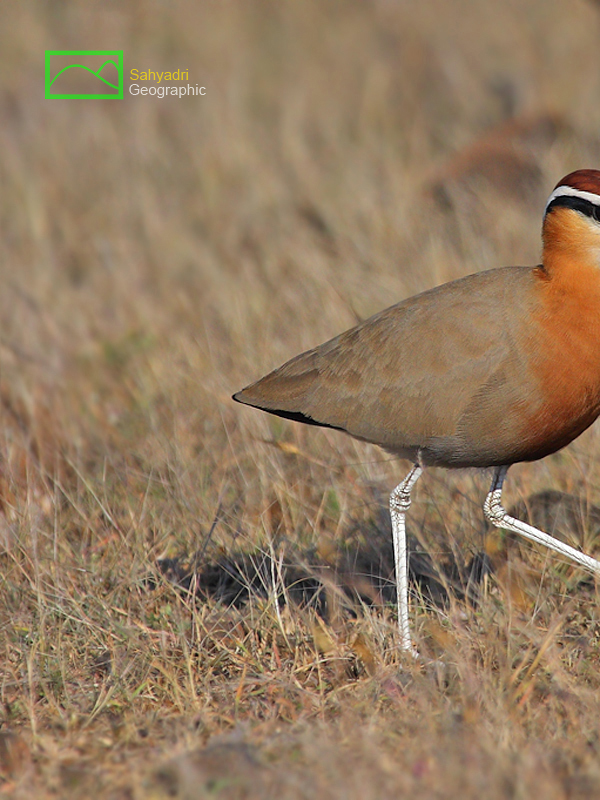 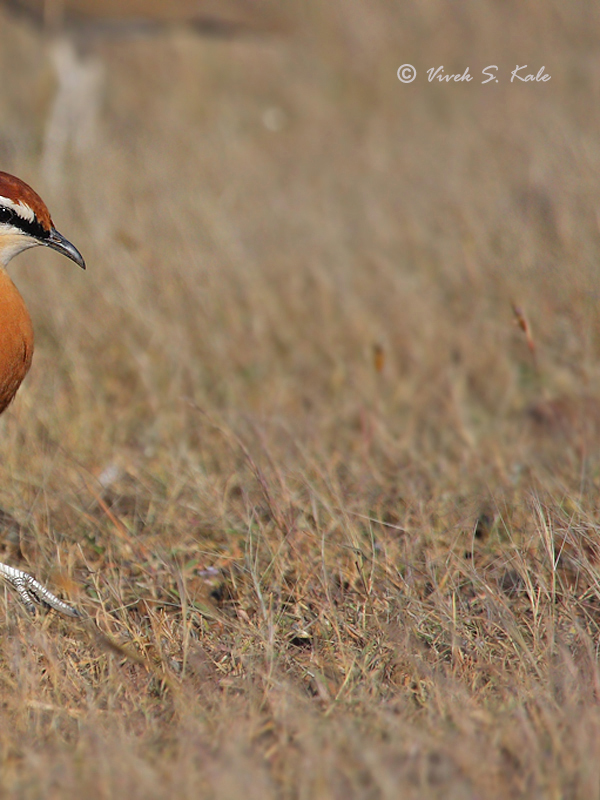 |
| |
| 12. Indian Courser, Cursorius coromandelicus, Dry grasslands, Pune district, Maharashtra, India |
| |
|
|
धाविक हा पक्षी गवताळ माळरानावर रहातो. त्याच्या या अधिवासात लपणारे अशी त्याची रंगभुषा असते. पक्ष्यांच्या गटागटाने ते गवतात फिरताना आढळतात. कोर्सर पक्ष्याच्या तीन जाती भारतात आढळतात. इंडियन कोर्सर (धाविक) , क्रिम कलर्ड कोर्सर (फिका धाविक), जेर्डोन कोर्सर या तीन जातींपैकी महाराष्ट्रातील माळरानांवर इंडियन कोर्सर (धाविक) आढळतो. ओसाड माळराने, शुष्क प्रदेश हा त्याचा अधिवास आहे. कमी उंचीच्या गवताळ माळरानांवर तो प्रामुख्याने आढळतो. आकाशातुन जमिनीवर उतरताना हे पक्षी जमिनीला समांतर तरंगत हळुवार जमिनीवर उतरतात. उतरल्यावर ते धावत धावत वेग कमी करुन स्थिरावतात. म्हणुन त्यांना धाविक असे म्हणतात. उंच सफेद पाय, फिक्या तपकिरी रंगाचा व डोळ्यांवर सफेद आडवी लकेर असे याचे रुप असते.
हे पक्षी गवतातले किडे खातात. आय यु सि एन संस्थेच्या वर्गिकरणानुसार हा पक्षी "लिस्ट कन्सर्ण्ड" श्रेणीत आहे.
दुर्दैवाने गवताळ माळरान म्हणजे निरुपयोगी जमिन या मानवाच्या धारणेमुळे वेगाने याचा माळरान अधिवास लुप्त होत आहे. मोकळ्या रानावर उघड़्यावरच घरटे करणाऱ्या या पक्ष्याच्या संख्येत शहरीकरणामुळे घट होताना दिसते.
शहरांजवळची माळराने झपाटयाने कमी होत आहेत. औद्योगिकरणामुळे आणी शहरीकरणामुळे गवताळ माळराने नष्ट होत आहेत. त्यामुळे हे पक्षी या भागातुन दिसेनासे होत आहेत.
|
|
Indian courser known scientifically as Cursorius coromandelicus is one of the three species of coursers found in India. It is a bird from Cursorius genus.The other coursers found in India are viz. the cream coloured courser from Cursorius genus and the rare and critically endangered nocturnal Jerdon’s courser from Rhinoptilus genus. The Indian courser is one of the enigmatic birds of Indian dry grasslands and arid region. These birds are often seen in small flocks. They nest in open in dry rocky grasslands. Coursers walk in the grass looking for the food. These birds walk a lot and are called as "dhaavik" in Marathi, meaning the runners. These birds run a short distance after landing.
Their camouflage is very interesting and is called as obliterative coloration.(graduating tones, with colors which are same as the habitat) Their crown is rich rufous.The black strips pass through the eyes and the white strip pass above the eyes merging together at the neck behind. Their legs are long with beautiful silver white coloration. The bird is very elegant. Often the bird is seen in very small grassland strips in the midst of cultivated farms.
As per IUCN red list classification the bird is “Least Concern” species. Unfortunately its habitat is being destroyed around the urban regions due to agricultural and industrial activities.
|
|
|
| |
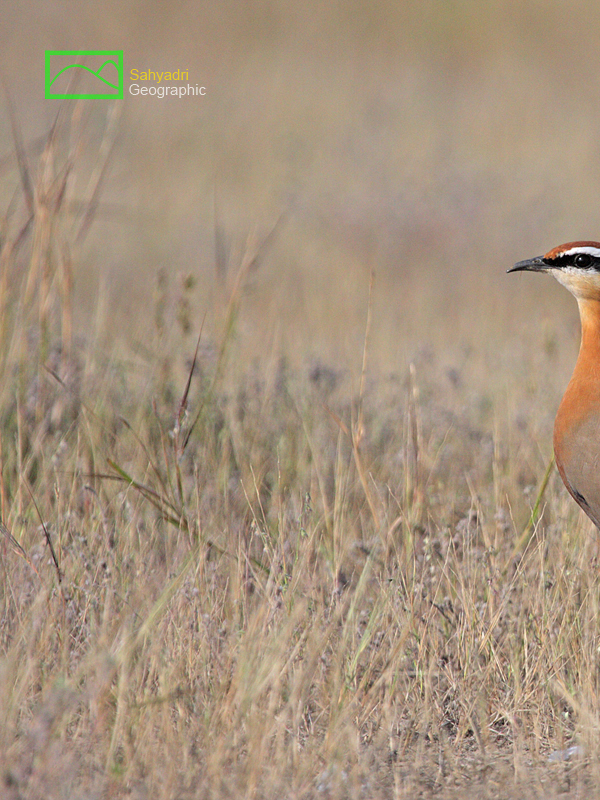 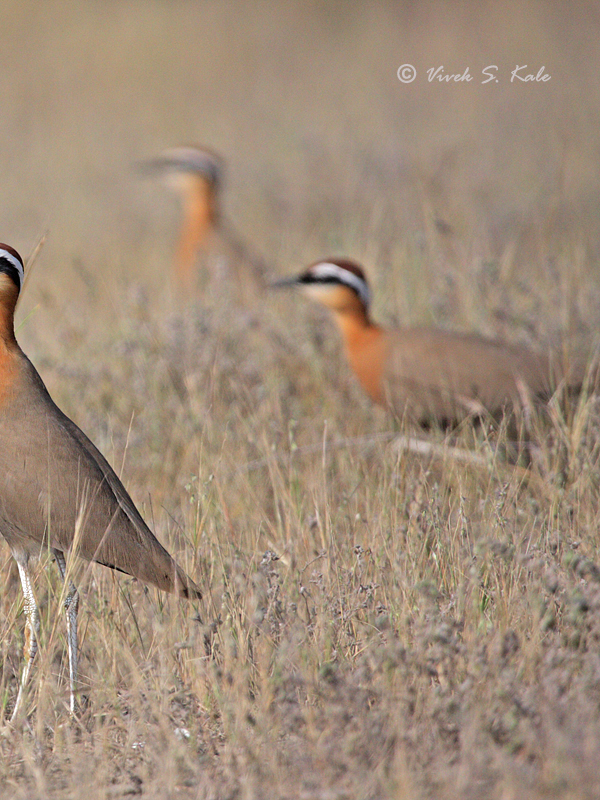 |
| |
| 13. Indian Courser, Cursorius coromandelicus, Dry grasslands, Pune district, Maharashtra, India |
| |
|
|
| |
 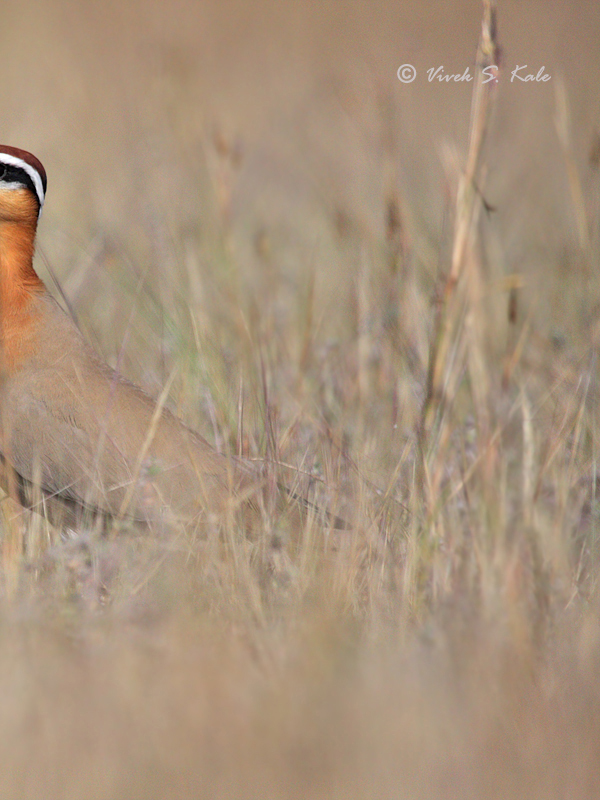 |
| |
| 14. Indian Courser, Cursorius coromandelicus , Dry grasslands, Pune district, Maharashtra, India |
| |
|
|
| |
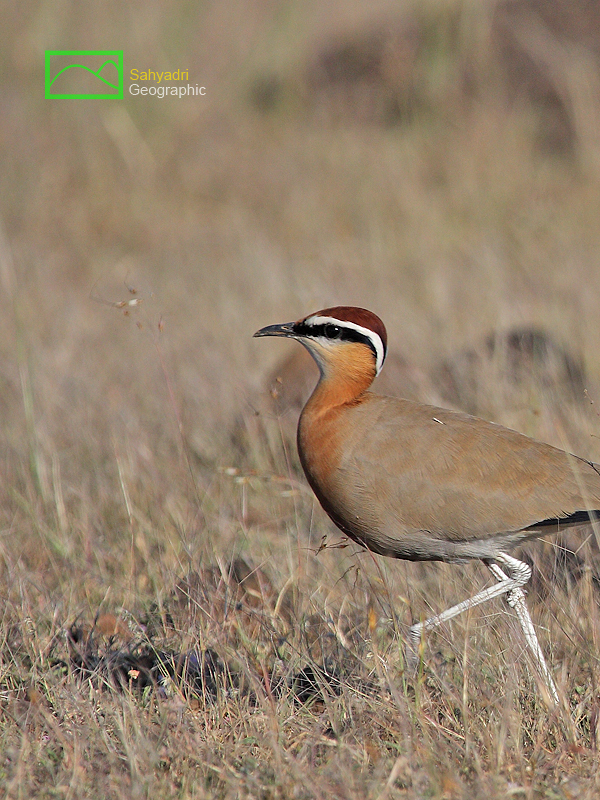 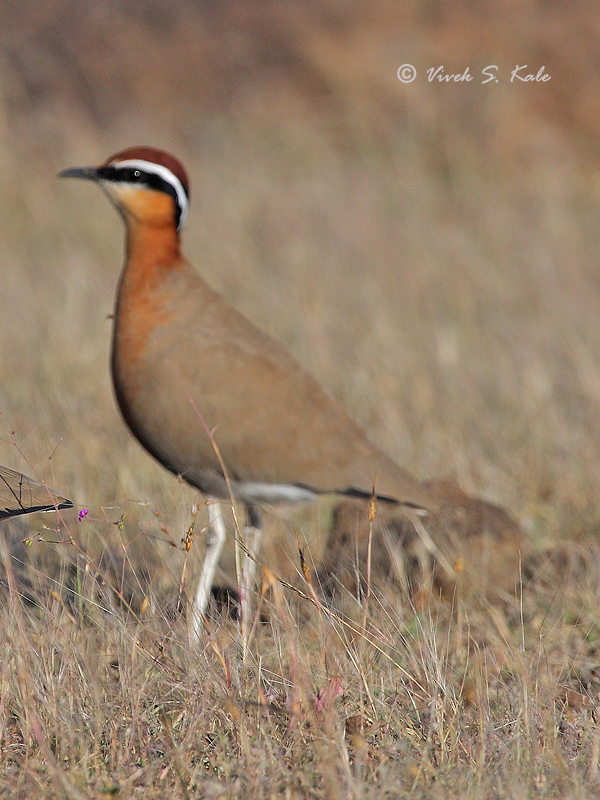 |
| |
| 15. Indian Courser, Cursorius coromandelicus , Dry grasslands, Pune district, Maharashtra, India |
| |
|
|
| |
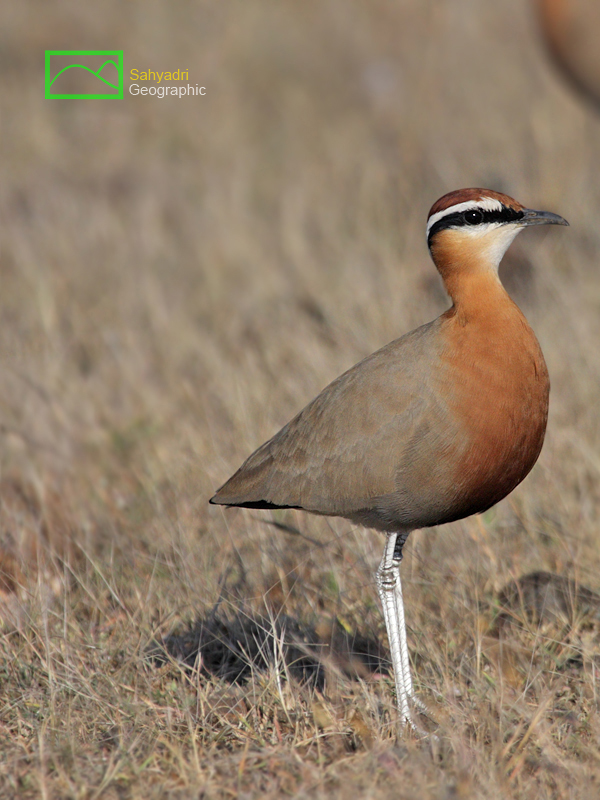 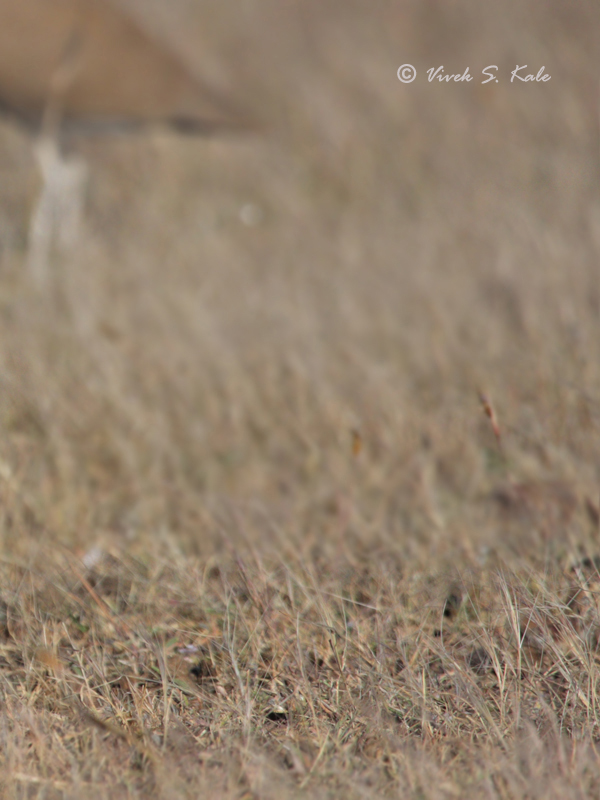 |
| |
| 16. Indian Courser, Cursorius coromandelicus, Dry grasslands, Pune district, Maharashtra, India |
| |
|
|
| |
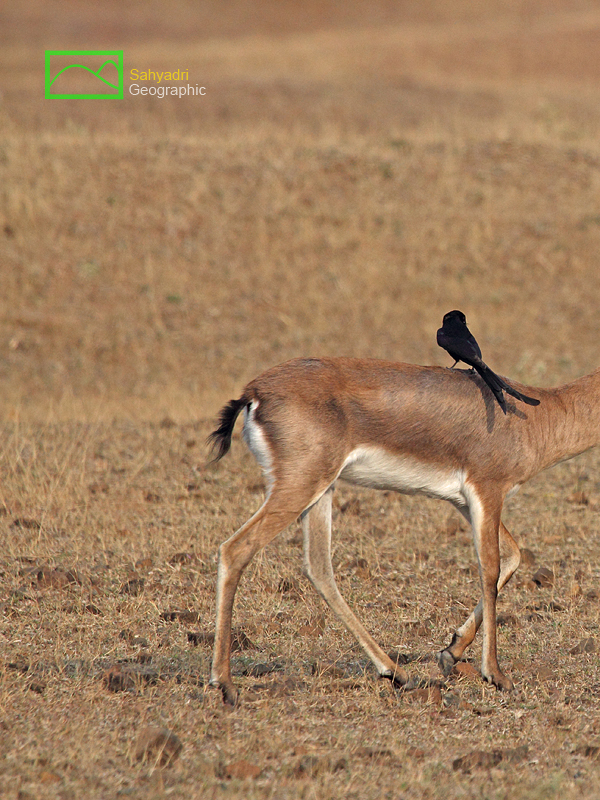 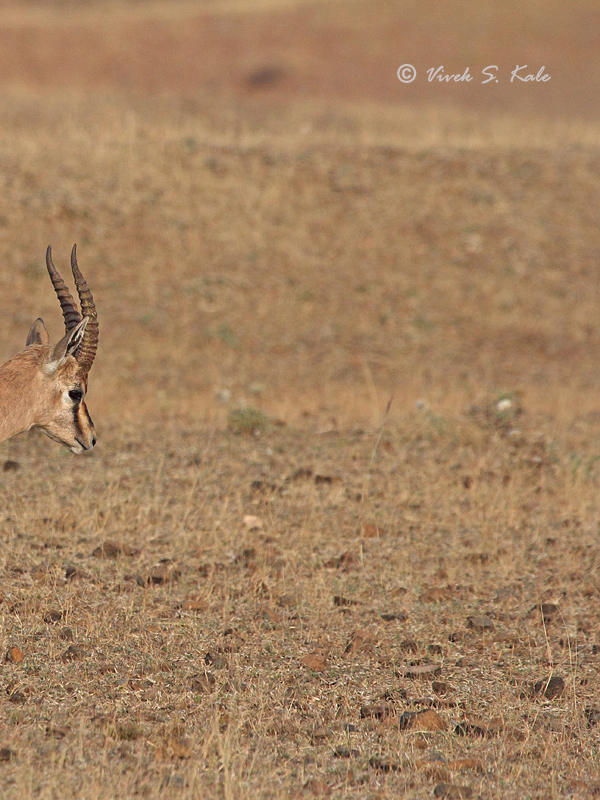 |
| |
| 17. Indian gazelle, Chinkara, Dry grasslands, Pune district, Maharashtra, India |
| |
|
|
चिंकारा हा काळविटापेक्षा लहान, अंगाने नाजूक पण चपळ व देखणा प्राणी आहे. वायव्य व मध्य भारतात तो कृष्णा खोऱ्याच्या उत्तरेस आढळतो. लहान कळपात रहाणारा हा प्राणी पाण्याशिवाय अनेक दिवस काढू शकतो. तो उजाड माळरानांवर, वाळवंटात आढळतो. बेकायदा शिकार व त्याच्या अधिवासात होणाऱ्या मानवी अतिक्रमणामुळे चिंकाराचे अस्तित्व हळुहळु धोक्यात येत आहे. |
|
Chinkara is a slender bodied antelope, which lives in a small herd of 10-20 individuals. The animal is seen in rocky areas, thin forested areas, scrub covered hills. It is also seen in sand dunes in desert. Its food is grass and leaves. It takes its water from vegetation and dew, if water is not available. The population of Chinkara in India is affected due to illegal hunting and habitat destruction.
|
|
|
| |
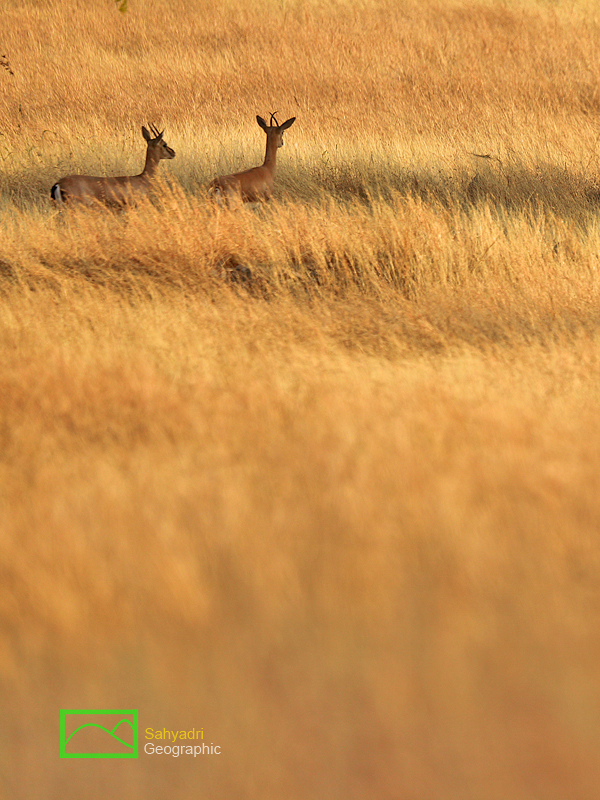 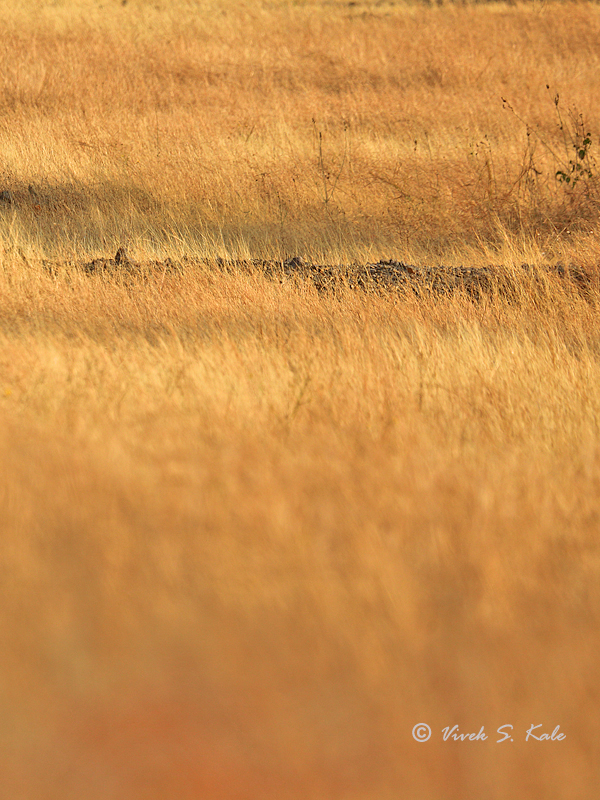 |
| |
| 18. Indian gazelle, Chinkara, Dry grasslands, Pune district, Maharashtra, India |
| |
|
|
| |
 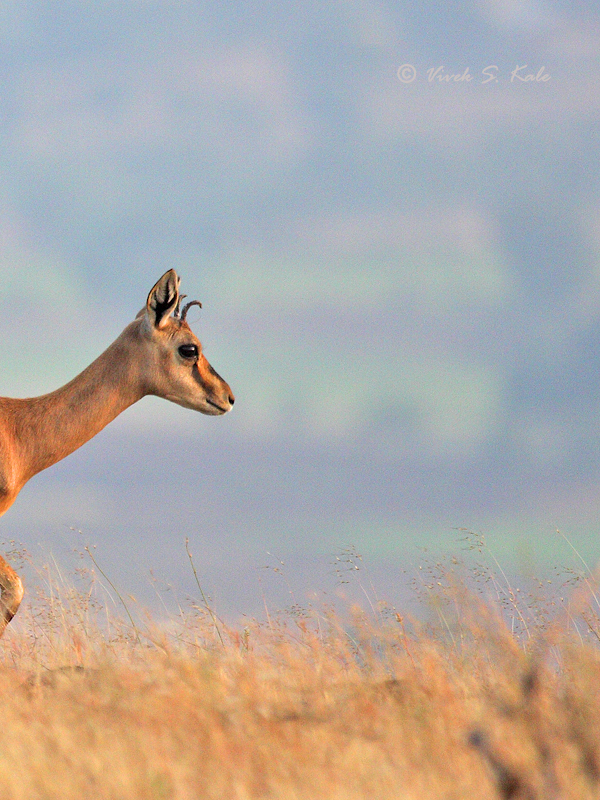 |
| |
| 19. Indian gazelle, Chinkara, Dry grasslands, Pune district, Maharashtra, India |
| |
|
|
| |
  |
| |
| 20. Indian gazelle, Chinkara, Dry grasslands, Pune district, Maharashtra, India |
| |
|
|
| |
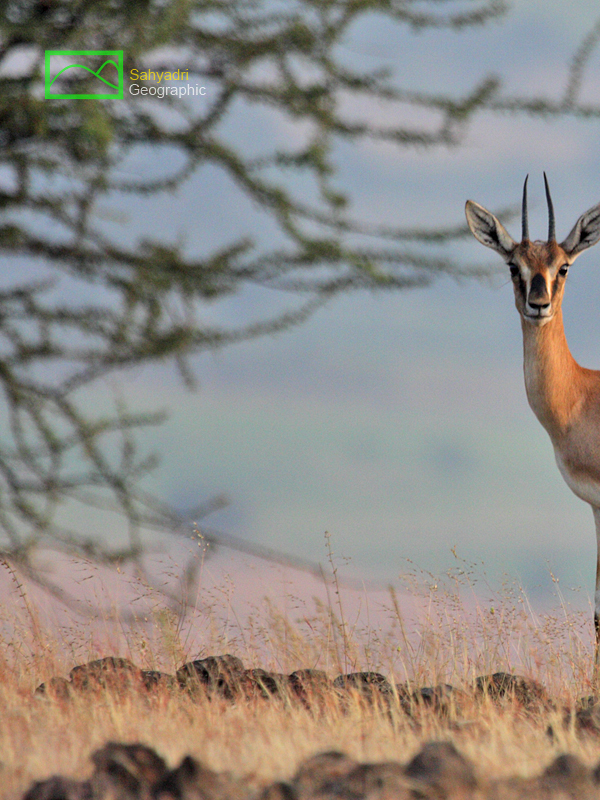 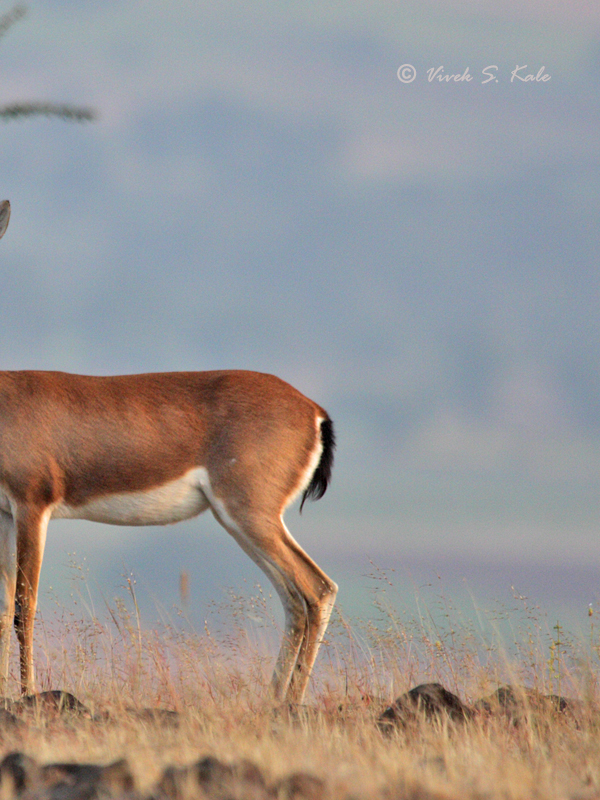 |
| |
| 21. Indian gazelle, Chinkara, Dry grasslands, Pune district, Maharashtra, India |
| |
|
|
| |
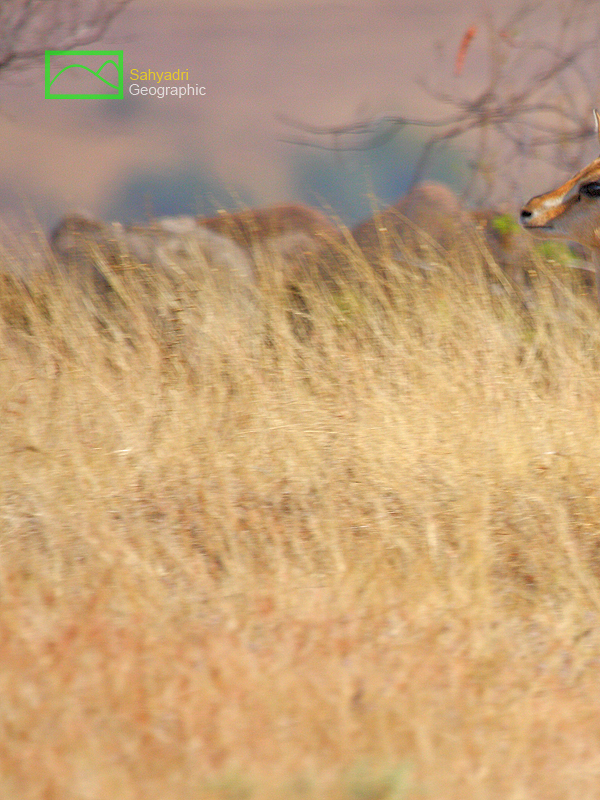  |
| |
| 22. Indian gazelle, Chinkara, Dry grasslands, Pune district, Maharashtra, India |
| |
|
|
| |
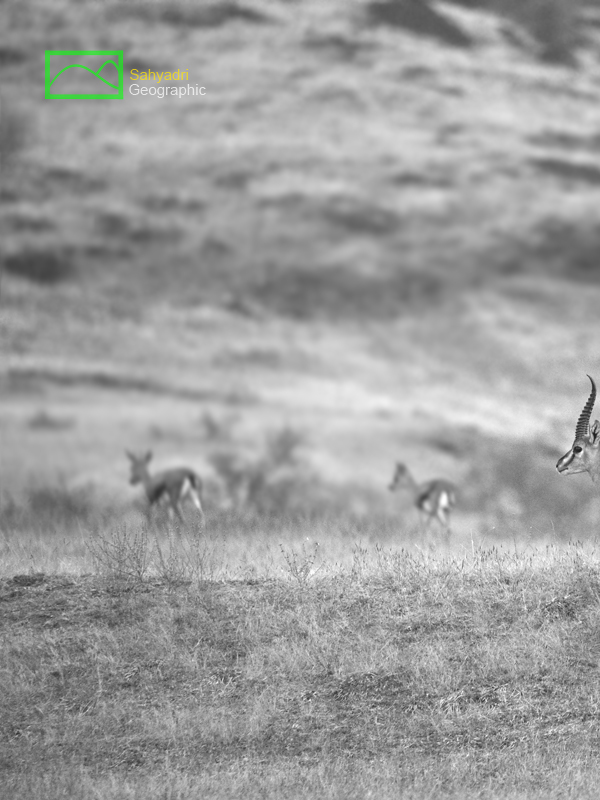 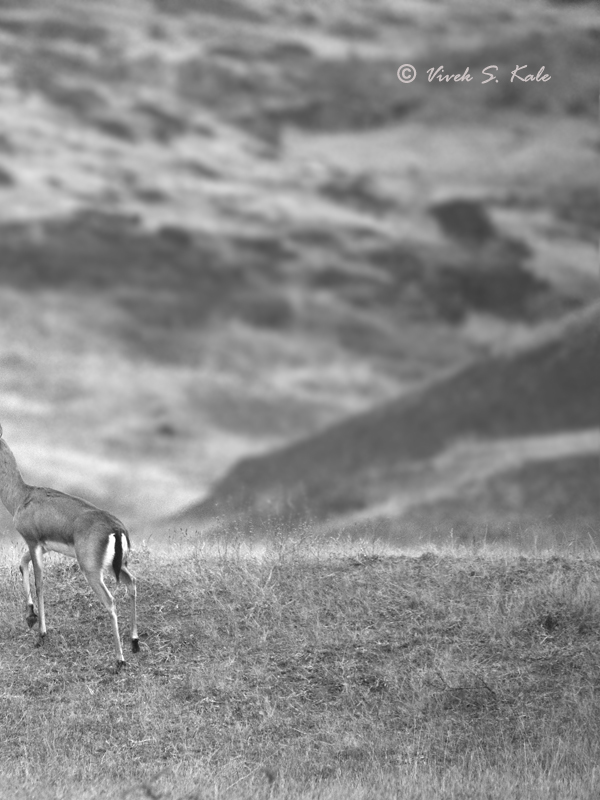 |
| |
| 23. Indian gazelle, Chinkara, Dry grasslands, Pune district, Maharashtra, India |
| |
|
|
| |
 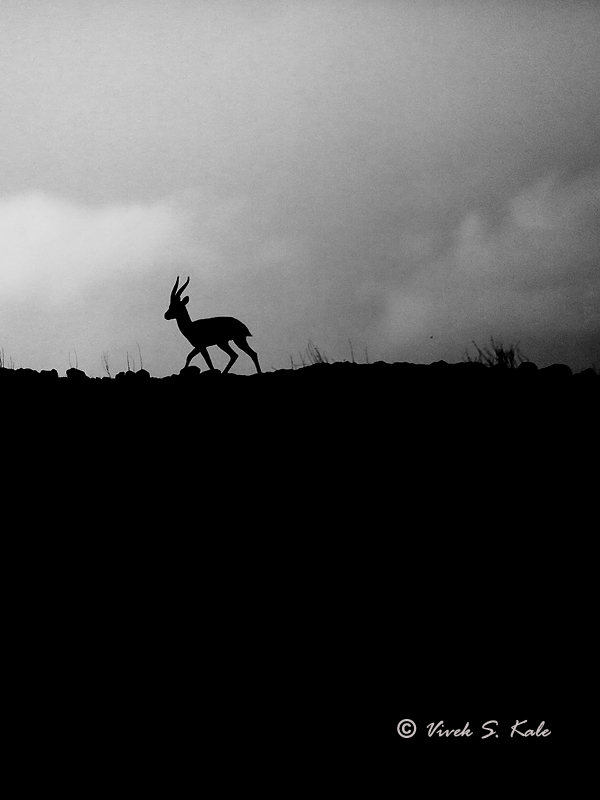 |
| |
| 24. Indian gazelle, Chinkara, Dry grasslands, Pune district, Maharashtra, India |
| |
|
|
| |
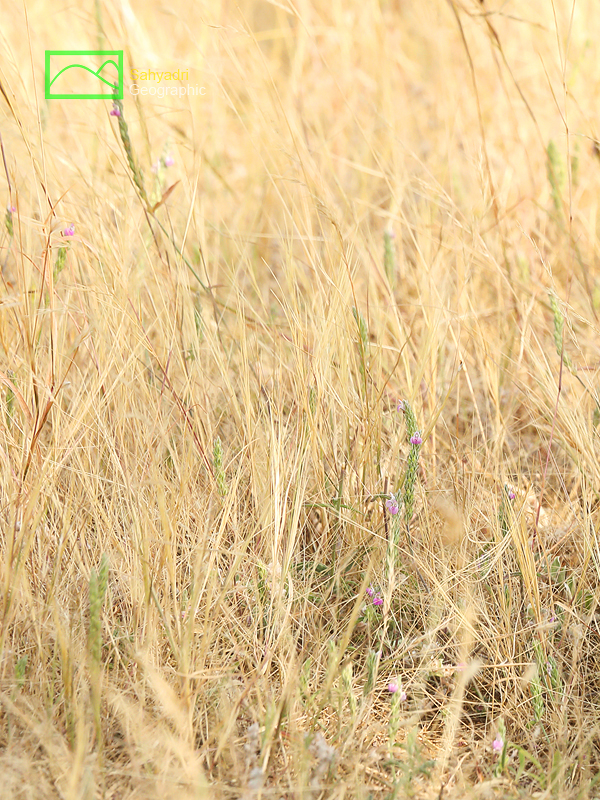 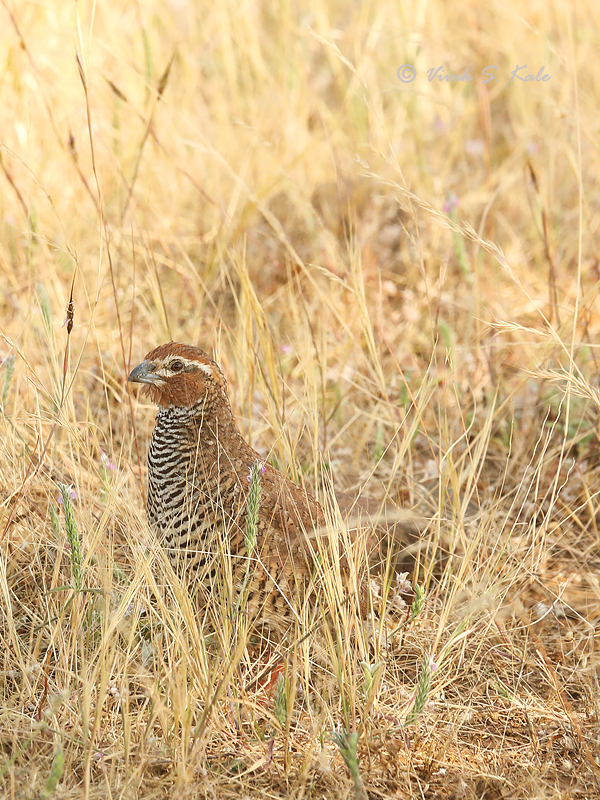 |
| |
| 25. Rock bush Quail, Dry grasslands, Pune district, Maharashtra, India |
| |
|
|
लावा पक्ष्यांच्या आठ जाती भारतात आढळतात. त्यातील सहा जातीचे लावा पक्षी महाराष्ट्राच्या पश्चिम घाटाच्या जवळपास आढळतात. साधा लावा, पावसाळी लावा, खडकाळ भागातील लावा, जंगल लावा, रंगीत लावा आणी निळ्या छातीची लावा अश्या या लावा पक्ष्यांच्या विविध जाती आपल्या भागात आढळतात. लावा पक्षी अत्यंत लाजाळु असतात. ते झुडुपांखाली आणी गवतात त्यांचे छुपे आयुष्य जगतात. त्यांची रंगसंगती आजुबाजुच्या अधिवासाशी मिळतीजुळती असल्याने त्यांना शिकाऱ्यांपासुन संरक्षण मिळते. त्यांच्या जवळ गेल्यास ते एका ठिकाणी स्तब्ध होऊन थांबतात. मात्र त्यांच्या अगदी जवळ गेल्यास ते अचानक उडुन वेगवेगळया दिशेस जातात. आवाजांचा उपयोग करुन ते पुन्हा एकत्र येतात.
|
|
There are eight species of quails seen in India. Out of these about 6 species of quails can be seen in and around Western Ghats in Maharashtra. These species include coomon quail, rain quail, rock bush quail, Jungle bush quail, painted quail and blue breasted quail. Quails are highly secret birds and they roost under the thick bushes. These birds are seen in the groups and are ground dwelling birds. They are highly camouflaged with their surroundings and take quick flight when distrubed by the intruder from very close distance. Otherwise at the first sense of intruder these birds maintain still position and try to hide in the grass.
|
|
|
| |
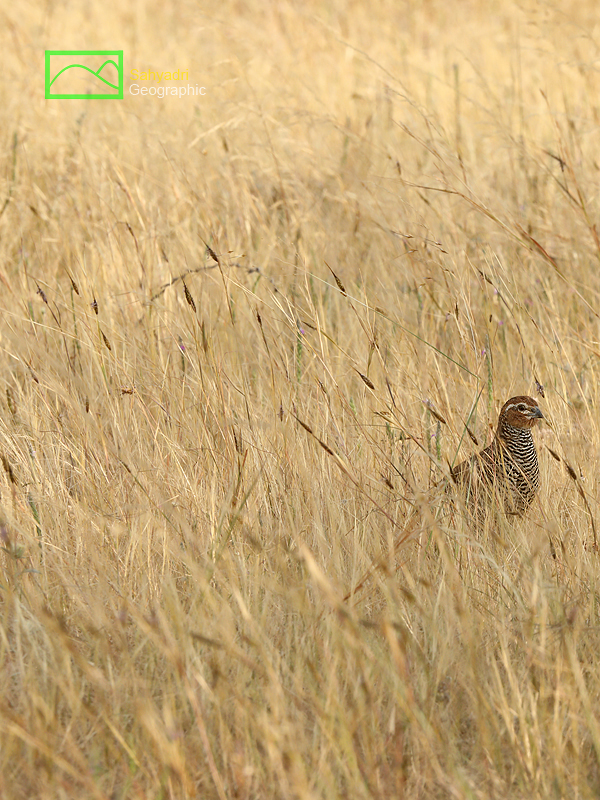 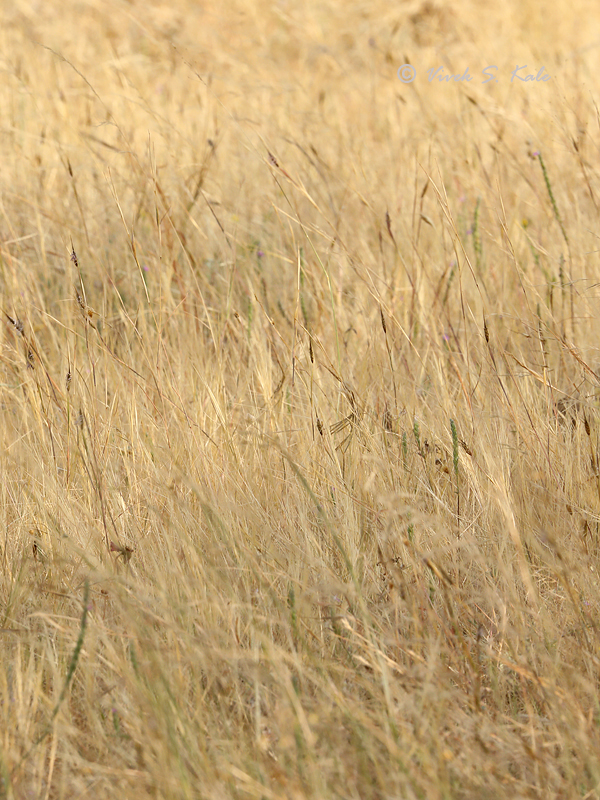 |
| |
| 26. Rock bush Quail, Dry grasslands, Pune district, Maharashtra, India |
| |
|
|
| |
  |
| |
| 27. Rain Quail, Dry grasslands, Pune district, Maharashtra, India |
| |
|
|
| |
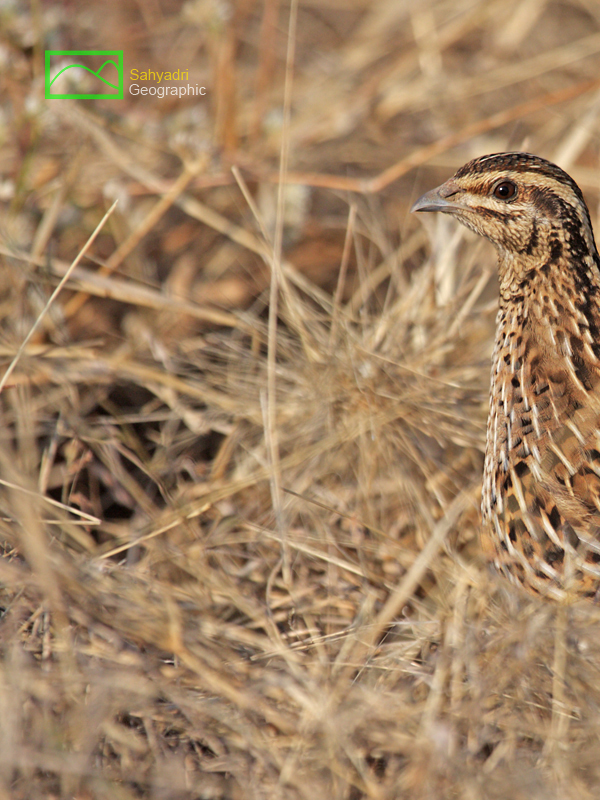 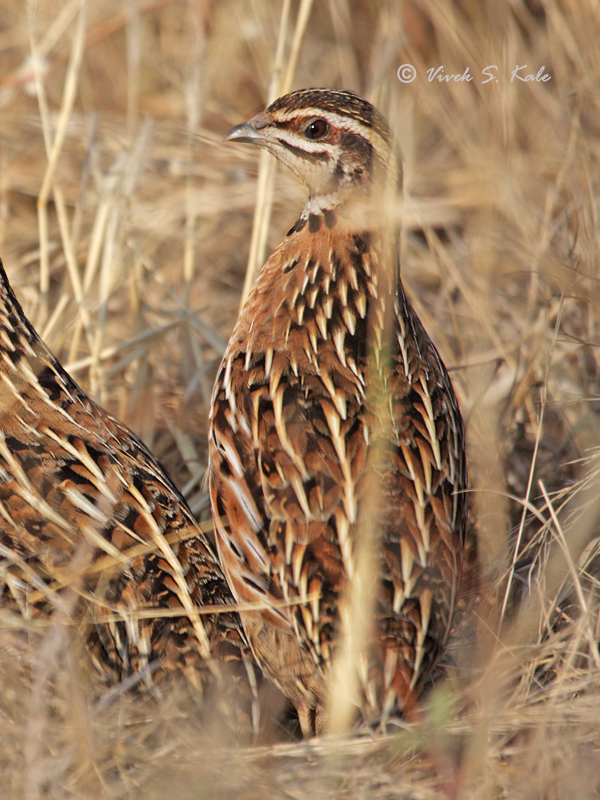 |
| |
| 28. Rain Quails, Dry grasslands, Pune district, Maharashtra, India |
| |
|
|
| |
|






























































